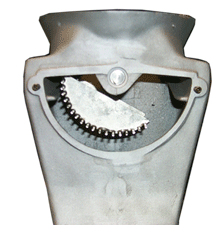

MD5 Checksum is a deduplication mechanism that requires Silent Sifter to create a unique fingerprint for each file by loading the entire file, which can take a long time especially for large numbers of files or network file shares. This method focuses on the best duplicate prevention, which means sifting will take a fair amount of time, but duplicates will almost never occur. When this option is enabled, Silent Sifter will compare input files to each other and to output files using a method called ‘MD5 checksum’ prior to sifting in order to prevent copying of duplicates into your output locations. The preferences screen can be reached by selecting the menu option Silent Sifter->Preferences…

Changing these preferences will have a significant impact on how Silent Sifter behaves, so please understand the ramifications prior to making changes. Follow the links to learn more.Using the preferences screen will allow you to change global preferences for how Silent Sifter functions.

When building custom folder structures, file renaming patterns, filters, moments, etc, you will use some variation of tokens, token options, and the token editor. Filtersįilters can be applied to inputs and outputs. In these cases, files will come in intermittently over time, and you may wish for Silent Sifter to wait until all of the files have presumably appeared, and are ready to sift. A good example of this is when using autosift with Apple PhotoStream, or Dropbox camera upload. This is especially helpful in conjunction with Moments, so that you can ensure that an AutoSift is not triggered too early, thereby grouping moments in an incomplete or sub-optimal way. This value is only used if AutoSift is enabled on a given input. This is a configurable value, which you can set individually on each input. By default, this is set to 1 Minute.ĪutoSift delay defines how long Silent Sifter should wait after a file change was detected in the given input that indicates an AutoSift is needed. This can also provide you the ability to import files one time, retain them on your camera, and then delete or modify photos in your library without those photos being re-imported on the next import from the camera.Įvery input location has it’s own setting for Minimum AutoSift Delay. This can provide tremendous time savings if you find yourself retaining a large number of files on your camera, and then sifting the files over and over again. You can now set this to ‘New Files Only’, which will only import files that were successfully copied to or found as a duplicate in ****Any**** output on a previous sift. By default, this is set to ‘All Files’.įiles to import defines which files will be imported from a given input camera into a temporary folder and then sifted.īy default, and in previous versions of Silent Sifter this was always ‘All Files’.


 0 kommentar(er)
0 kommentar(er)
